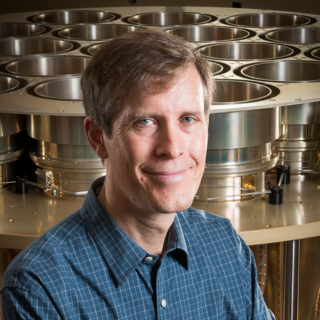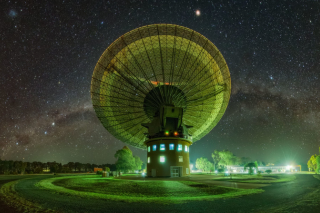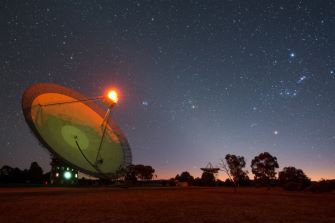ATNF News 1 | July 2023



Welcome to our new ATNF newsletter for the astronomy community.
The Australia Telescope National Facility, or ATNF is one of the world's most advanced radio astronomy facilities and has a unique view of the southern hemisphere sky across a broad spectrum of radio frequencies.
It exists to support you and other members of the international radio astronomy community to expand our understanding of the Universe.
The three telescopes that make up the ATNF can be used together, or in combination with other radio telescopes in Australia and internationally, to form the Long Baseline Array.
They can be used to investigate a broad range of subjects – from the evolution of galaxies, magnetic fields and black holes to using pulsars to look for gravitational waves.
Astronomers from all over the world access the telescopes free of charge based on the scientific merit of their observing proposal. We receive about 200 unique proposals each year; in 2022-23 this represented more than 700 astronomers.
Through four editions of ATNF News each year we’ll be sharing the information you need to apply for observing time using the instruments, updates on the latest ATNF technology developments, as well as the latest science enabled by the telescopes that make up the facility.
People are at the heart of the ATNF. We’re proud to have recently received the Silver Pleaides award from the Astronomical Society of Australia’s IDEA chapter. In each edition of the newsletter, you’ll also hear about the people that make the ATNF possible.
Thank you for being part of our community.

We continuously improve the instruments that make up the ATNF. Read on for more information about the latest enhancements and how they may affect you.
CryoPAF for Parkes
On Wiradjuri Country, engineers are gearing up to install the first cryogenically cooled phased array feed (PAF) receiver on our Parkes radio telescope, Murriyang.
The CryoPAF receiver brings significant improvements in several key areas that, taken together, will help astronomers see fainter objects, survey more of the sky, and study a wider range of cosmic phenomena.
The receiver's incredibly cool system temperature maximises sensitivity across the full frequency range, from 700 MHz to 1.9 GHz, and because it provides up to 72 dual-polarised beams, CryoPAF can help map a given area of the sky faster and in greater detail for our most accurate reproduction of the structure on the sky.
We're planning for installation beginning September 2023, and key 'on telescope' testing for the receiver’s development. Science commissioning gets underway shortly afterwards, and we plan to commence shared-risk user-driven observing with an initial subset of CryoPAF modes in early 2024.
BIGCAT for ATCA
For ATCA on Gomeroi Country, development of the BIGCAT system continues during the 2023OCT semester. BIGCAT is a new system that will replace the CABB digital backend, using a combination of field-programmable gate arrays and graphics processing units to process data at twice the bandwidth of the current system.
Installation is expected to start in early 2024, with commissioning following in the first quarter of the year. Once operational, BIGCAT will be more flexible and reliable than CABB, it can be easily reconfigured to accommodate different types of observations, and will ultimately be better at rejecting radio frequency interference.
These features together make BIGCAT a powerful tool for studying a wide range of astronomical phenomena.

This year's Shaw Prize for astronomy has been jointly awarded to Matthew Bailes, Duncan Lorimer, and Maura McLaughlin.
Discovery of the first-known fast radio burst by the team was made when the researchers were re-processing archival data collected by our Parkes radio telescope, Murriyang, using an innovative algorithm designed to search for burst events.